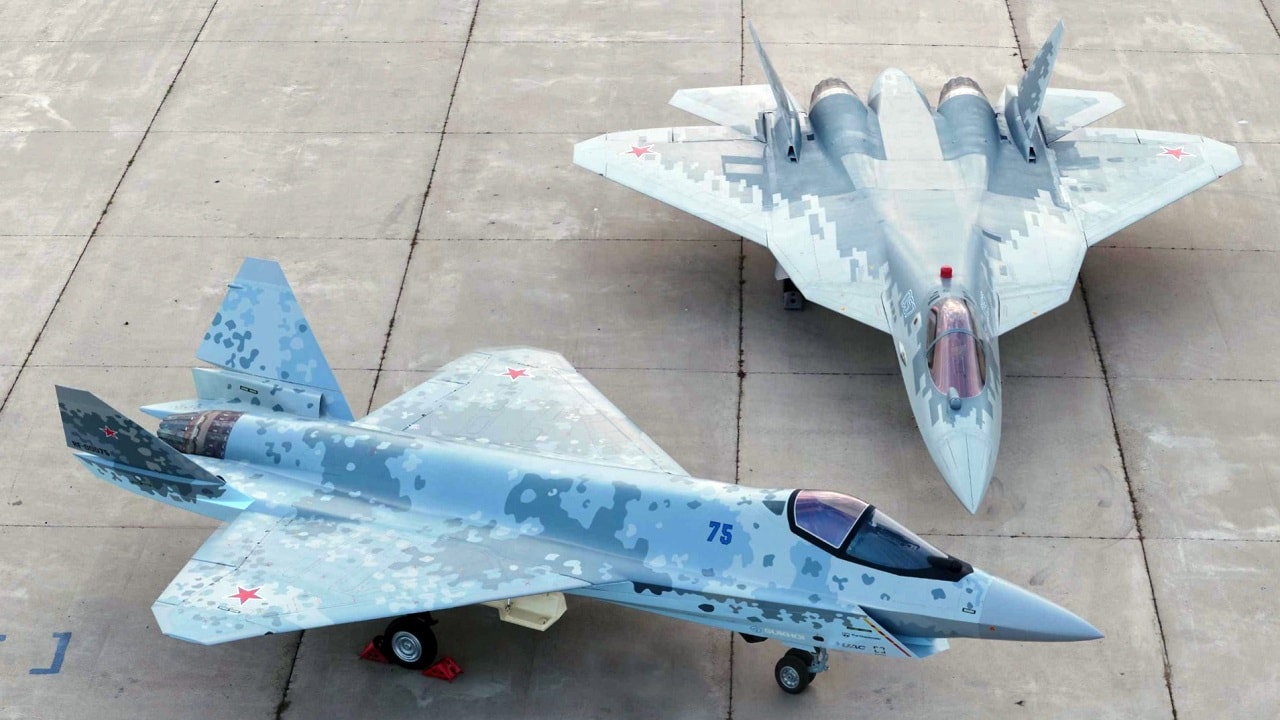Summary and Key Points: The Su-57 Felon represents Russia’s ambitious attempt at developing a fifth-generation stealth fighter to rival the American F-22 and F-35.
That 1 Enemy – The Perception Problem: While it boasts advanced avionics, internal weapon storage, and some stealth features, it falls short of its Western counterparts in several critical areas, including stealth design—particularly in its non-stealthy engine nozzles.
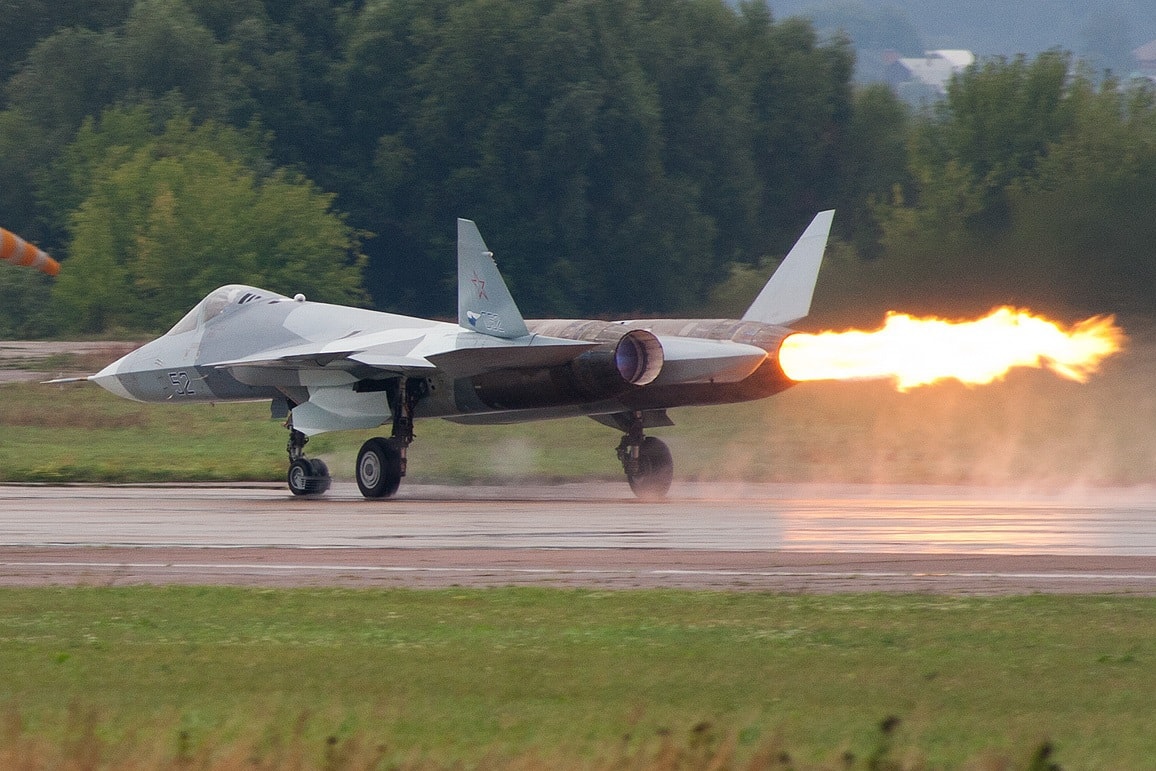
AL-41F1 engine compressor stall at MAKS-2011.
-Amid ongoing production challenges and Russia’s war in Ukraine, the Su-57 program faces significant constraints, limiting export potential.
-Despite reported interest from Algeria and offers to India, uncertainties remain over production capacity and timeline, making the Felon’s future as an export fighter jet highly questionable.
The Su-57 Felon Perception Problem
On paper, the Su-57 Felon is Russia’s most advanced fighter. It was designed with a nod to fifth-generation capabilities and intended to rival jets like the American F-35 or F-22.
Featuring a combination of advanced avionics, good maneuverability, and some stealth characteristics, the Su-57 marks Russia’s most concerted foray into fielding a stealth fighter.
But the Felon clearly has its share of challenges, which means selling the fighter jet to other countries will indeed be a hefty lift.
Su-57 Felon: On Par or Subpar?
Although Russia has strongly promoted the Su-57 as a stealthy fighter, the jet has several outward differences compared to more mature fifth-generation aircraft.
Like the F-35 and F-22, the Su-57 stores its weapons internally and likely incorporates radar-absorbing materials to augment its stealthy contouring, all intended to reduce the Su-57’s radar cross-section.
However, certain parts of the design, notably the distinctly non-stealth engine nozzles, as well as some of the airplane’s paneling, are almost assuredly less stealth than their American or even Chinese counterparts.
This could prove to be a significant hindrance in highly contested environments against advanced air defense systems.
Despite ongoing challenges in production and procurement for its air force, Russia has continued to tout the Su-57 as ready for export to countries interested in acquiring a fifth-generation fighter but without access to more mature options like the American F-35.
Recently, Russian state media reported that an unnamed foreign country would begin operating the Su-57 sometime this year, though more specific details were not available. It would eventually be reported that Algeria is the first nation to purchase the Felon.
“The first foreign customer of the promising fifth-generation multirole fighter Su-57E will begin operating this aircraft, which will be supplied by Rosoboronexport, in 2025,” Rosoboronexport CEO Alexander Mikheev told Interfax, a Russian wire service at the Aero India 2025 exhibition.
The Su-57E, the export variant of the Su-57 platform, would likely be somewhat less capable than the made-for-Russia domestic variant, particularly in avionics and electronic warfare capabilities, in order to maintain Russia’s technological aviation edge.
Most recently, Russia reportedly offered the Su-57 for export to India to augment the country’s shrinking fighter squadrons and better confront a burgeoning threat from China.
Interestingly, the fighter was offered to India as part of a full technology transfer, which would be made in India, signaling a potential workaround for circumventing a potentially slow production run in Russia.
Future Export Prospects for Su-57?
What are the prospects of wide-scale Su-57 export?
In a word, unclear.
Russia’s ongoing war in Ukraine has forced the Russian defense industry to focus on meeting pressing wartime needs rather than investing in more long-term future projects.
Although the Russian defense budget is at historically high levels not seen since the heady days of the Cold War, the vast majority of this funding has gone to sustaining the ground war.
Resources, therefore, are directed to drone and missile production, as well as artillery ammunition, and towards recruitment efforts in the form of sizable signup bonuses, a measure taken to avoid politically unpopular mobilization. This leaves little room for advanced aerospace projects.
Compared to these priorities, the Su-57 program, for export or for the Russian Air Force, is a rather low priority.
It is unclear how many Su-57s will be available for export and when they will be delivered. Despite the announcement of a new deal with Algeria, fulfilling this contract, let alone others on a short timescale, could prove to be a challenge and compete with Russia’s more pressing defense priorities.
In the near term, the future of the Su-57 Felon as a viable export platform remains to be seen.
Russian Fighter Jets: A Photo Essay
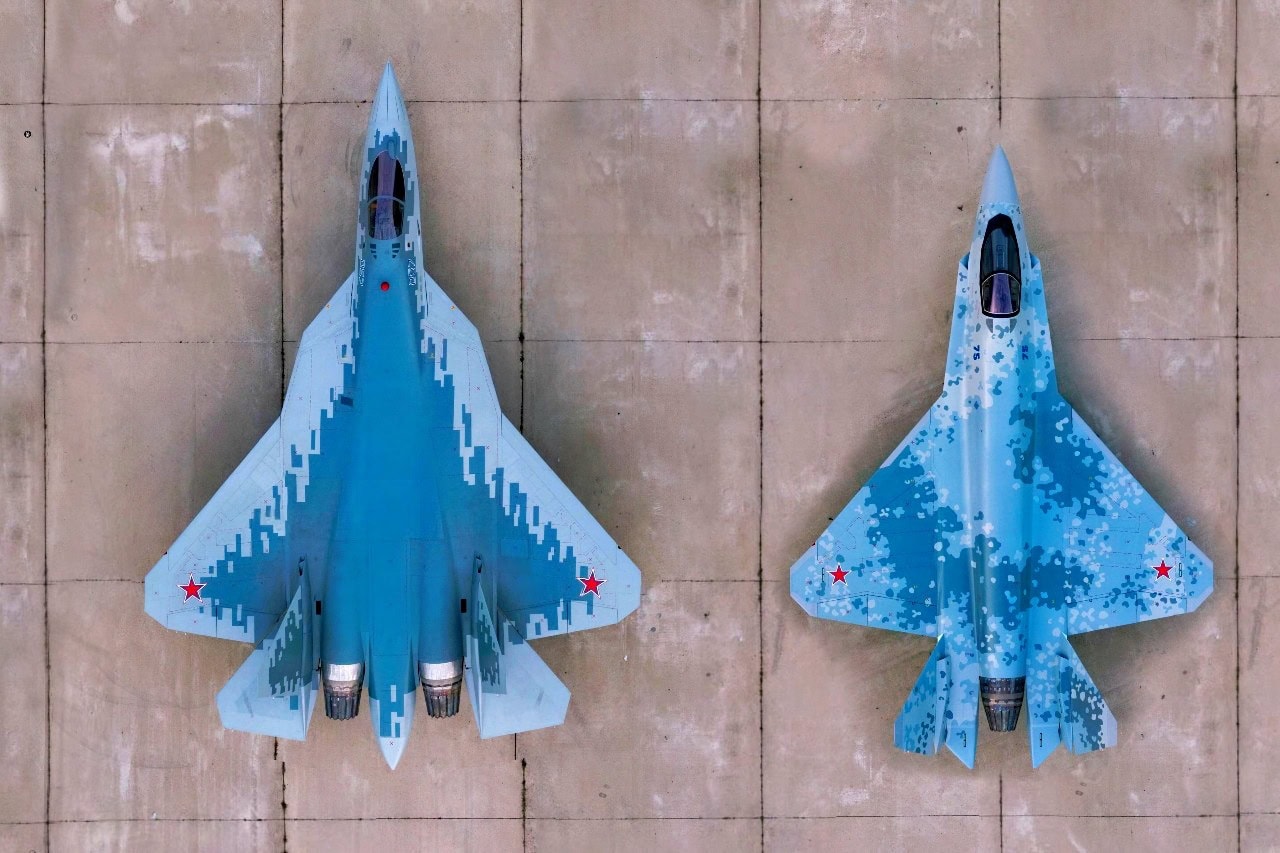
Su-57 Felon and Su-75 Fighters From Russia. Image Credit: Creative Commons.
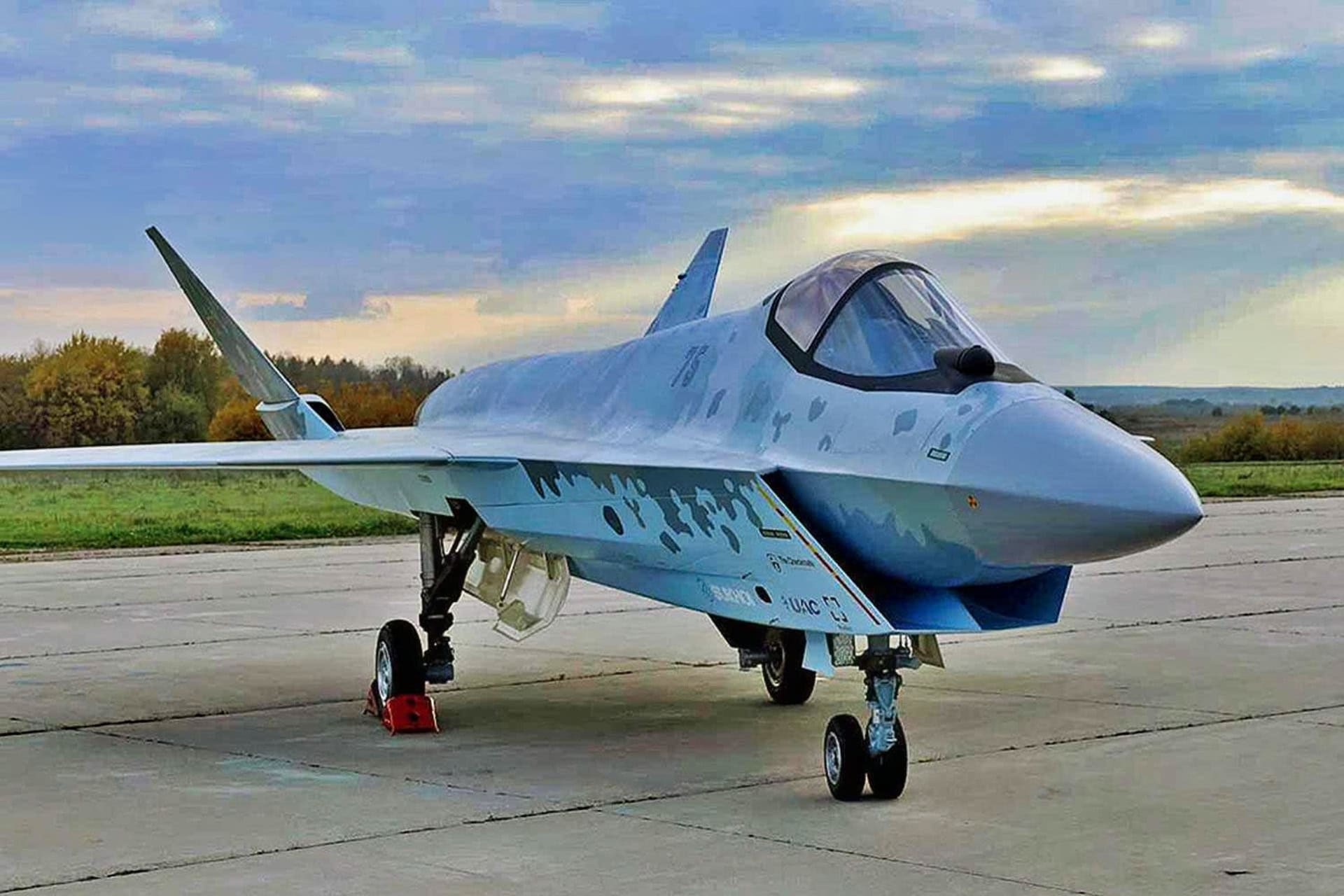
Su-75 Checkmate Russia Stealth Fighter. Image Credit: UAC.
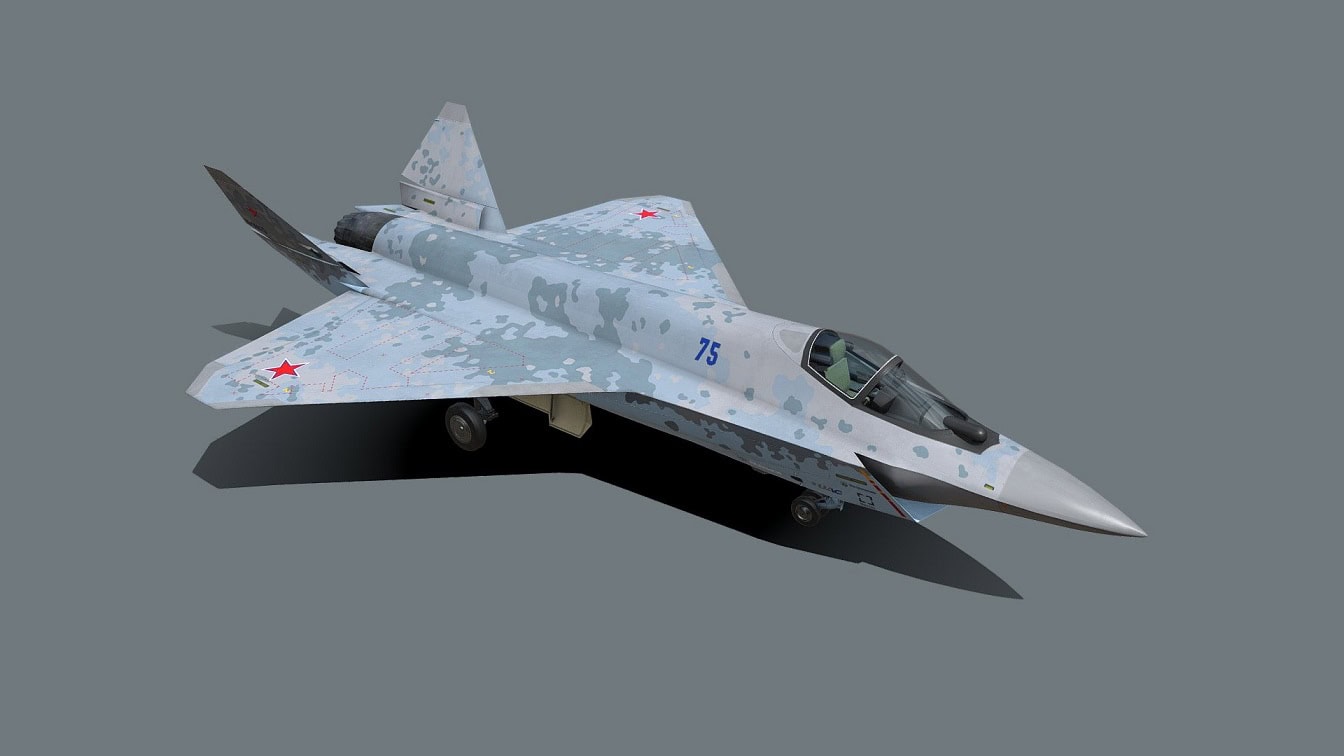
Su-75. Image Credit: Creative Commons/Computer Generated Image.
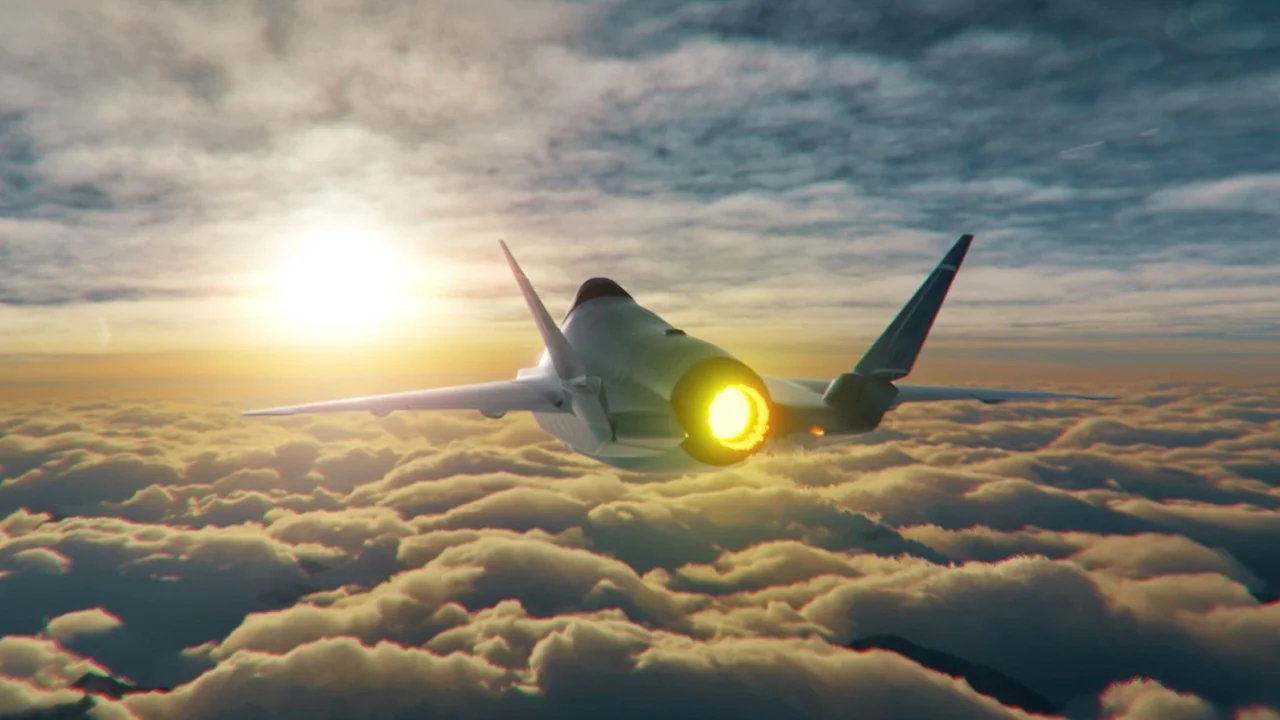
Su-75. Image Credit: Russian Government.
About the Author: Caleb Larson
Caleb Larson is an American multiformat journalist based in Berlin, Germany. His work covers the intersection of conflict and society, focusing on American foreign policy and European security. He has reported from Germany, Russia, and the United States. Most recently, he covered the war in Ukraine, reporting extensively on the war’s shifting battle lines from Donbas and writing on the war’s civilian and humanitarian toll. Previously, he worked as a Defense Reporter for POLITICO Europe. You can follow his latest work on X.

